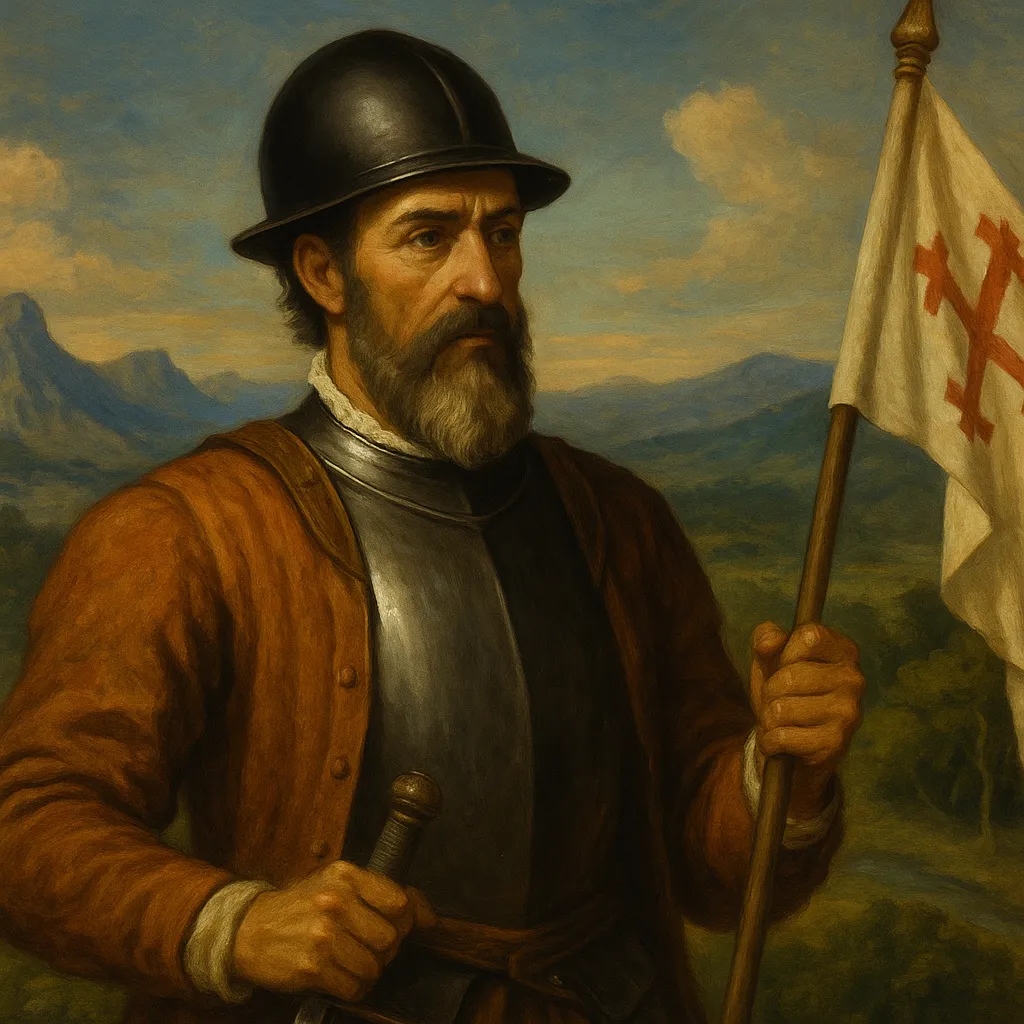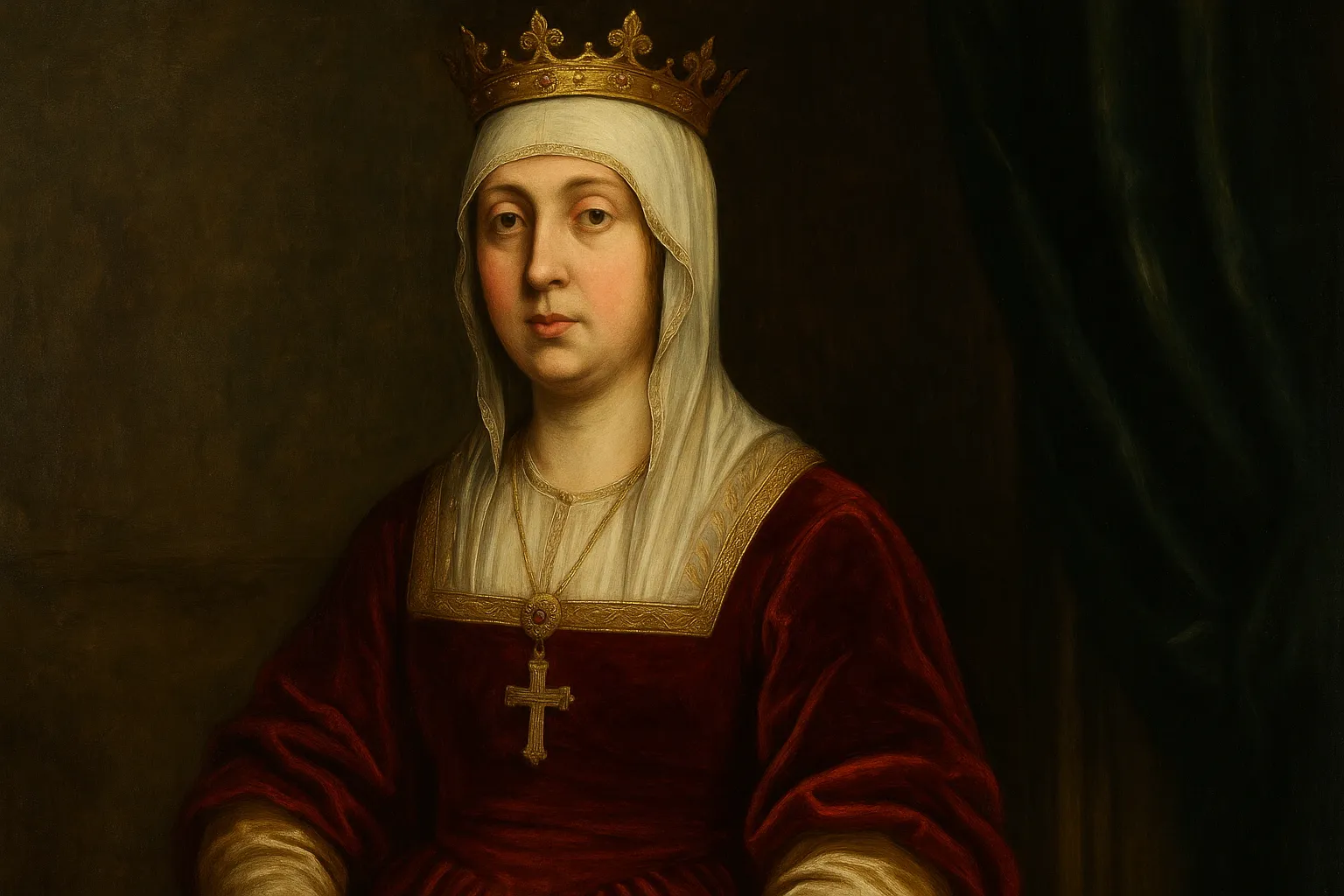Biography of Genghis Khan: Known for being the conqueror who shaped world history
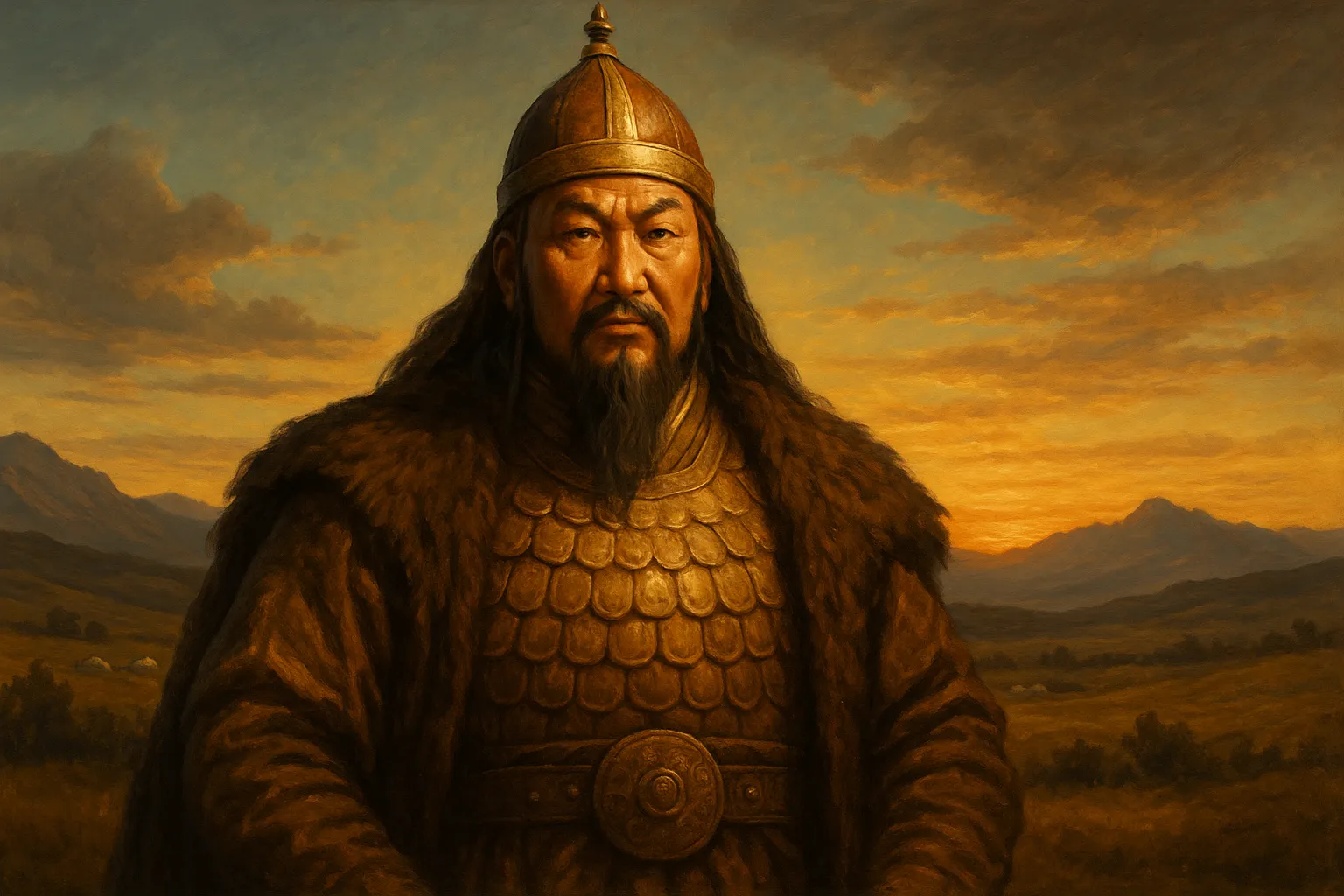
Genghis Khan, born as Temujin, stands as one of the most influential and enigmatic figures in world history. Known for uniting the Mongol tribes and founding the Mongol Empire in the 13th century, his legacy is a mix of awe and controversy. While often remembered for his brutal military campaigns, Genghis Khan was also a visionary leader who revolutionized administration, promoted religious tolerance, and established the foundations of a global empire. This educational biography explores the complex life of Genghis Khan and his lasting impact on history.
From Outcast to Survivor
Temujin was born around 1162 in the Mongolian steppes, into the Borjigin clan. His father, Yesugei, was a tribal chieftain with modest influence, while his mother, Hoelun, played a vital role in his upbringing.
At age nine, Temujin’s life took a dramatic turn when his father was poisoned by rival Tatars. The family was abandoned by their tribe, forcing them into a life of hardship and isolation. These early struggles forged Temujin’s resilience and leadership abilities. Living in survival mode, he learned to hunt, fight, and build trust among scattered allies—skills that would later shape the Mongol Empire.
Alliances, Betrayals, and Tribal Wars
As a teenager, Temujin began forging alliances with nearby clans. One crucial figure was Toghrul, Khan of the Keraites, who initially served as a mentor. Yet Mongol politics were volatile, and allegiances were often broken.
A defining rivalry emerged with Jamukha, Temujin’s childhood friend turned adversary. After a crushing defeat in 1187, Temujin regrouped and, nearly two decades later, decisively defeated Jamukha. In 1206, he was proclaimed Genghis Khan, or “Universal Ruler,” at a great tribal council (kurultai), officially marking the birth of the Mongol Empire.
Founding of the Mongol Empire
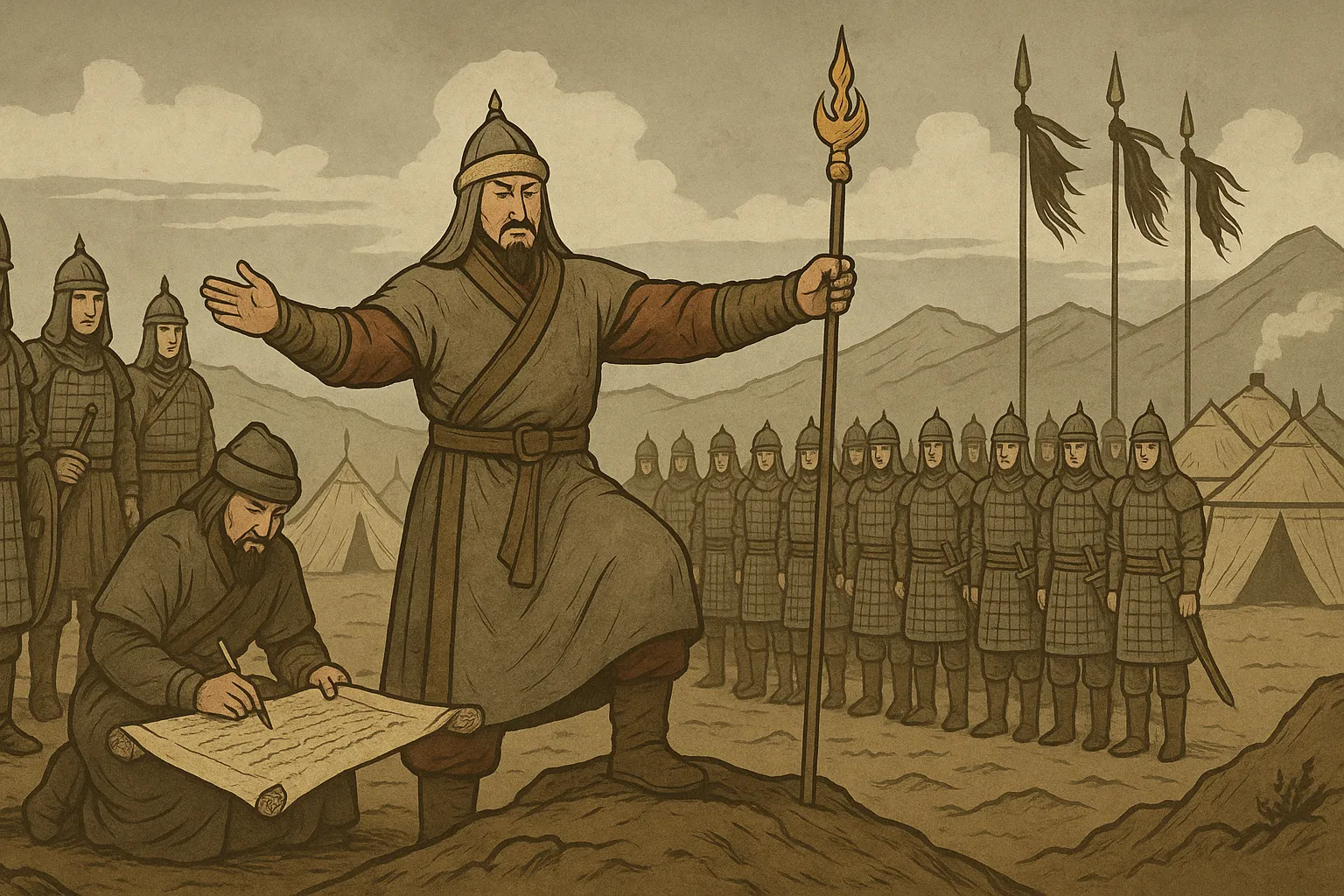
Once in power, Genghis Khan began an ambitious campaign to unify and expand. What set him apart was not just his military strength, but his revolutionary approach to leadership and governance.
He abolished tribal aristocracy in favor of a merit-based system, rewarding loyalty and competence. The Mongol army was restructured into decimal units of 10, 100, 1,000, and 10,000 men. Discipline, efficiency, and communication were enforced rigorously.
Genghis Khan also introduced the Yassa, a legal code that governed military behavior, protected trade caravans, and regulated civil life. It served as a foundational law code for the vast empire he was building.
Conquests in Central Asia and China
The first major campaign began in 1209 against the Western Xia dynasty in northwestern China, which surrendered shortly after. By 1211, Genghis Khan launched a war against the Jin dynasty, whose vast armies were no match for Mongol tactical superiority.
In 1219, the empire’s focus shifted westward to the Khwarazmian Empire, in present-day Iran and Central Asia. A diplomatic mission was brutally rejected by the Shah, prompting a devastating Mongol response. Cities like Samarkand, Bukhara, and Nishapur fell under siege and massacre, demonstrating the ruthless force of the Mongol war machine.
Military Innovations and Strategic Genius
Genghis Khan’s military success was built on speed, mobility, and intelligence. His use of light cavalry, feigned retreats, and psychological warfare disoriented and overwhelmed enemies. Espionage, ambushes, and even early forms of biological warfare were used to devastating effect.
Despite originating from a nomadic culture, the Mongols quickly mastered siege warfare, incorporating Chinese, Persian, and Muslim engineers. They used catapults, battering rams, and siege towers to overcome fortified cities—something unheard of for a steppe people.
His strategic use of fear and diplomacy—offering surrender before unleashing terror—played a psychological role in his rapid conquests.
More Than Just a Warlord
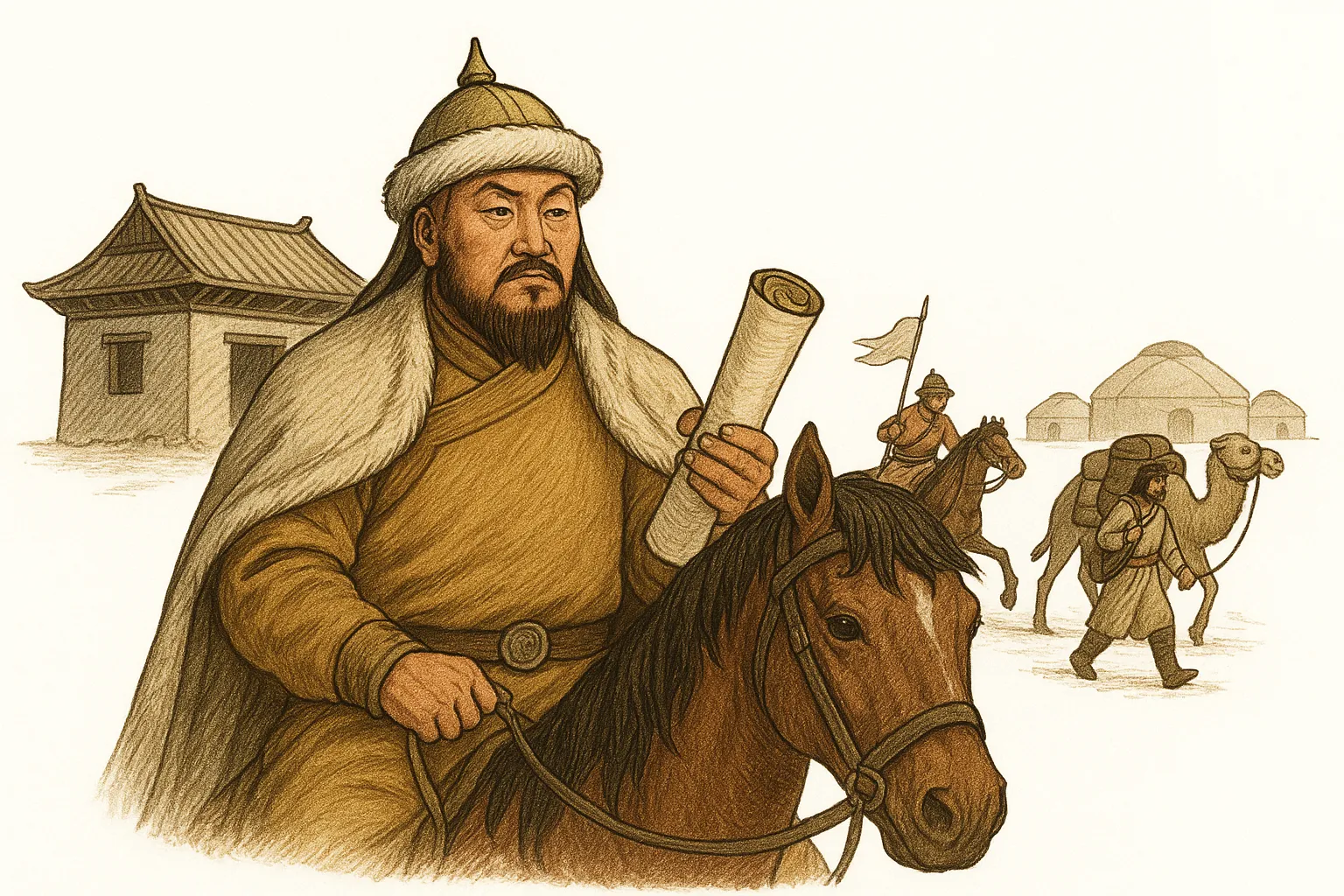
Genghis Khan was also a brilliant administrator. He developed a communication and trade network across Eurasia that laid the groundwork for what would become the Silk Road.
A relay system called Yam allowed for secure postal and intelligence transmission. Inns, horse stations, and guards ensured the safety of merchants and envoys—a stark contrast to the lawlessness that preceded him.
His empire embraced religious tolerance, allowing Buddhism, Islam, Christianity, and others to coexist peacefully—as long as they did not challenge Mongol authority. This approach attracted skilled administrators and scholars from across Asia.
Death and Succession
In 1227, during a campaign against the Tanguts of Western Xia, Genghis Khan died under mysterious circumstances. Theories range from battlefield injuries to a fatal fall from his horse. The location of his tomb remains one of history’s greatest mysteries.
Before his death, Genghis Khan designated his third son, Ögedei, as his successor, while dividing the empire among his other sons. This ensured continued expansion under unified command, though internal divisions would later weaken the dynasty.
Genius or Tyrant?
The legacy of Genghis Khan is complex and controversial. He was responsible for the deaths of millions and the destruction of entire cities. Yet he also unified diverse cultures under a single rule, promoted international trade, and enforced laws that ensured safety and order across a vast territory.
In Mongolia, he is revered as a national hero and founding father. In Central Asia and China, views are more mixed. In the West, he has historically been seen as a barbaric invader, though modern scholarship is gradually revealing a more nuanced picture.
Genetically, his impact is measurable: studies suggest that up to 0.5% of the global male population may be descended from him, due to the spread of his male lineage.
Conclusion
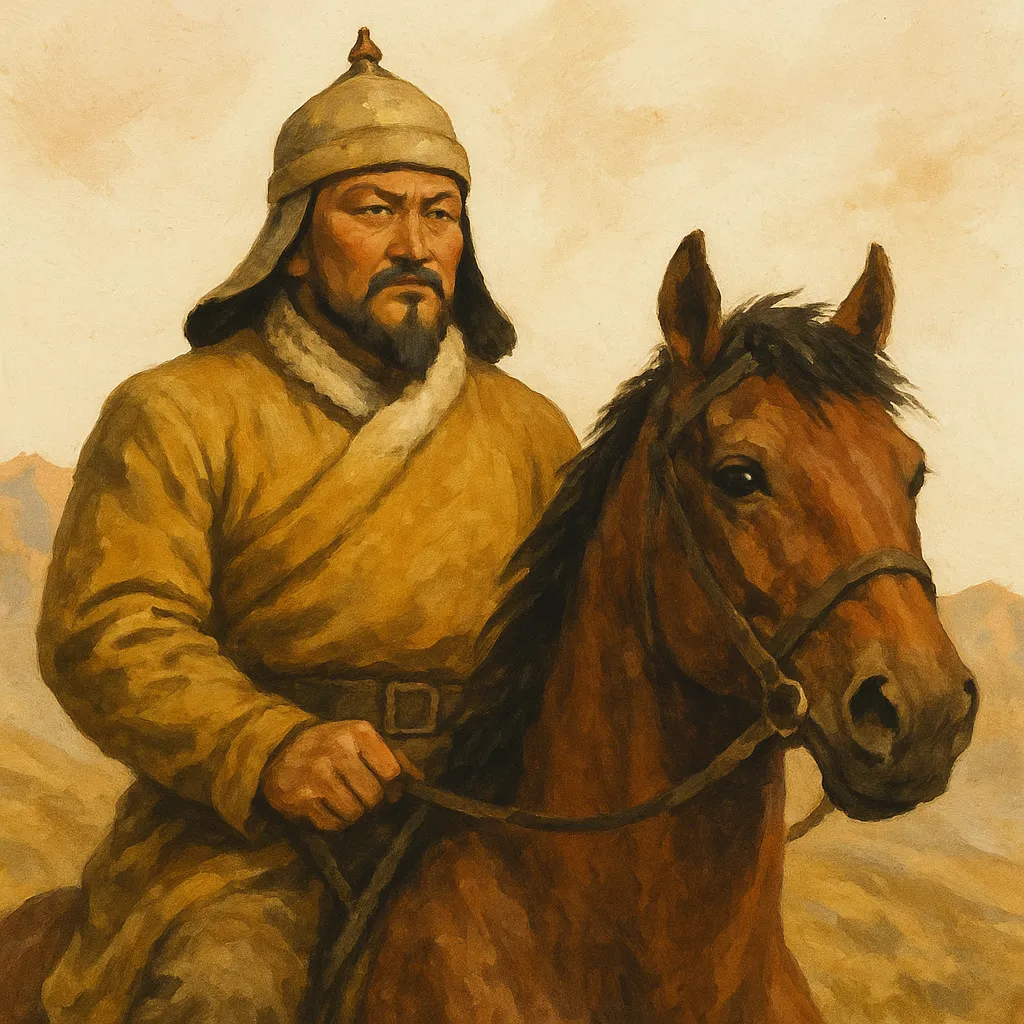
Genghis Khan was far more than a brutal conqueror. He was a revolutionary leader who reshaped the political, cultural, and economic landscape of Eurasia. Through organization, vision, and sheer force of will, he turned scattered nomadic tribes into the largest contiguous empire in history.
To understand the life of Genghis Khan is to explore the extremes of human ambition, cruelty, and innovation. His legacy, for better or worse, continues to shape the world we live in today.





